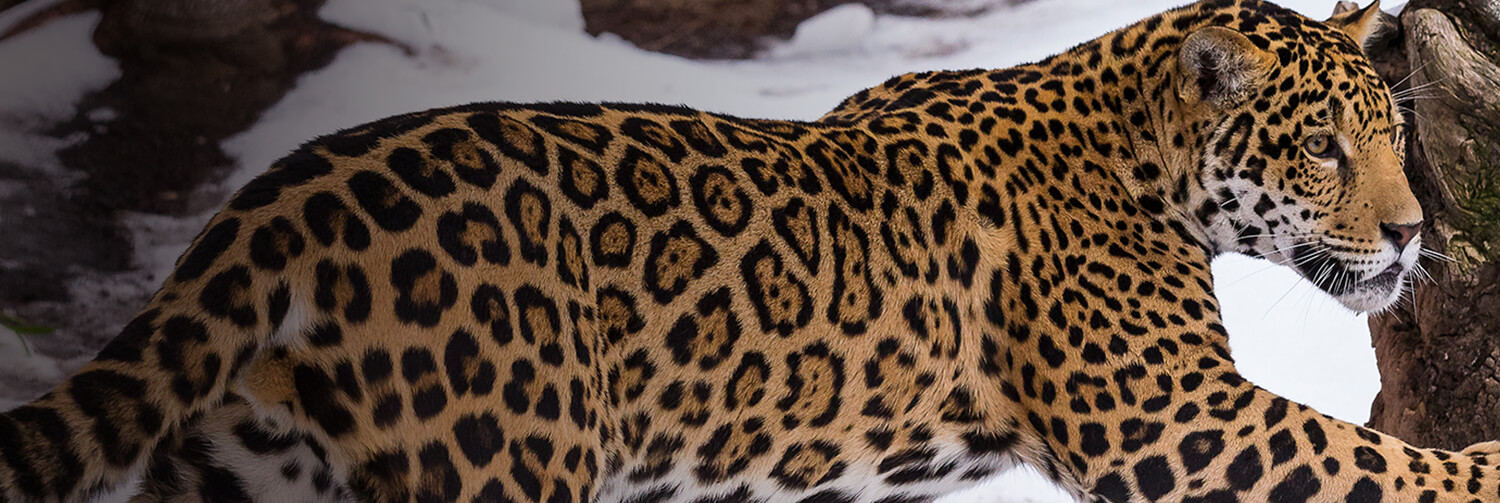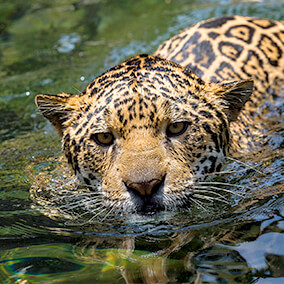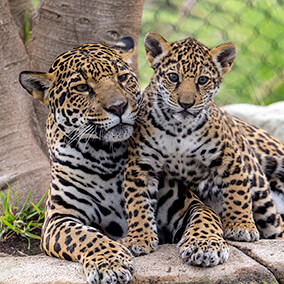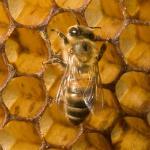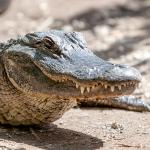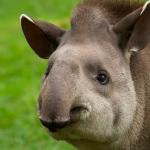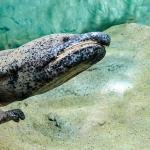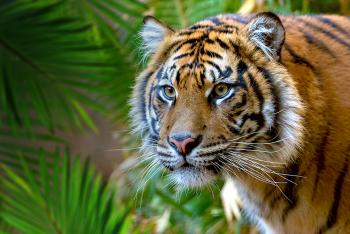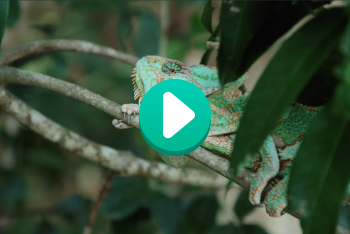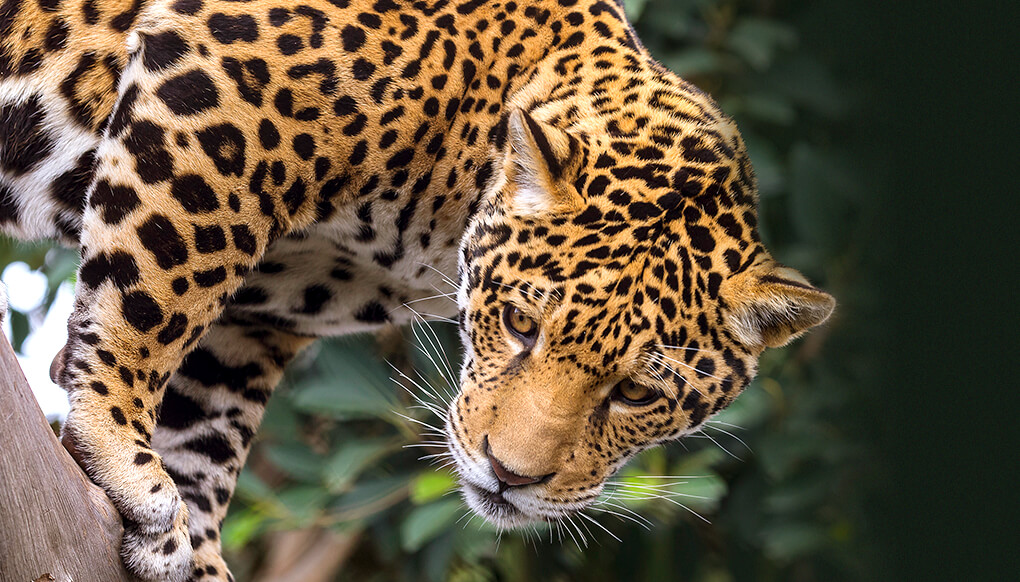
Jaguar

Mammals


Threatened
facts


Jaguars eat many animals, including turtles, fish, peccaries, deer, tapirs, cattle, capybaras, and caimans.

Jaguars live mainly in rainforests, but they can survive in other habitats, too—including grasslands, deserts, forests, and swamps.
description
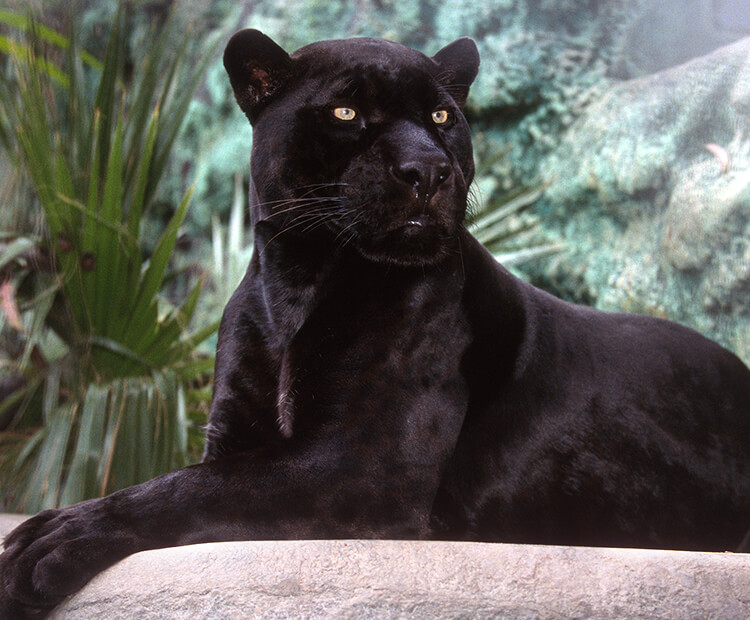
Jaguar? Panther?
Most jaguars have orange-brown fur with black spots, but some have black-on-black coloration. So, are they black panthers? No! “Panther” is just a general term that comes from Panthera, the scientific name for big cats. It is also sometimes used to describe leopards, jaguars, and mountain lions.
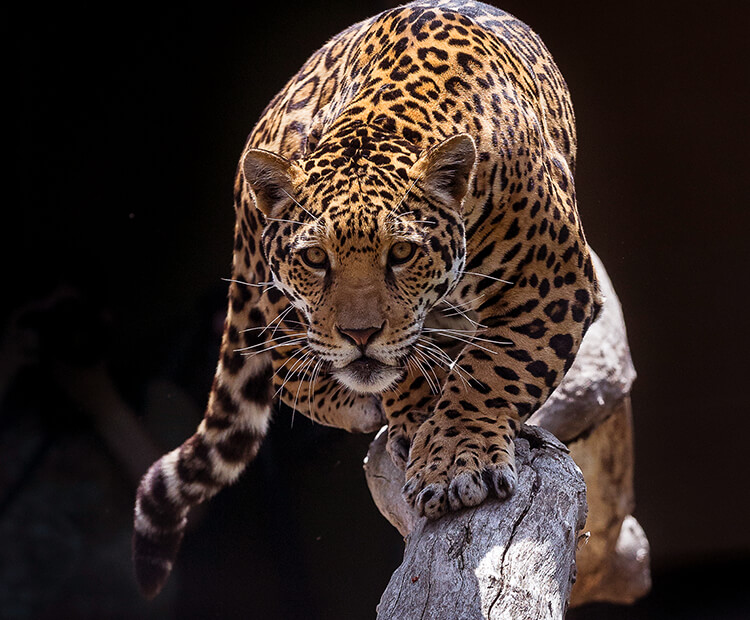
Waiting for dinner
Jaguars can run quickly, but they hide and wait for their food to stroll by instead of chasing it like cheetahs and lions do. Their large jaw muscles allow them to kill their prey by piercing the skull with their sharp teeth.
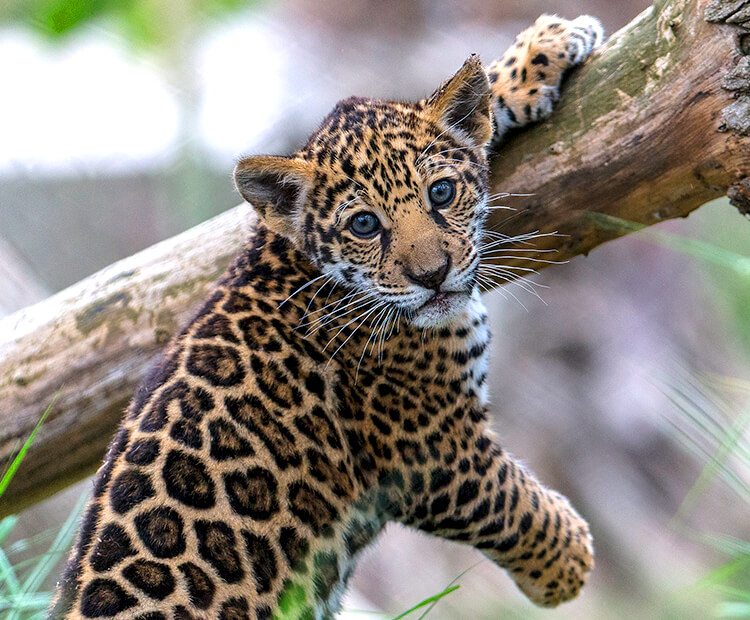
Threats to jaguars
As people move into jaguar habitat, these cats have started feeding on livestock. Ranchers often respond by trapping and poisoning the jaguars. Logging, mining, and farming also leave less food and habitat for jaguars, causing them to become endangered.
Jaguars are the only big cat species in the New World, and are found in South America, Central America, and North America.

